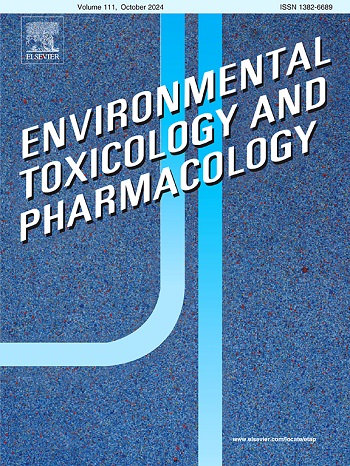Assessment of genetic damage levels in agricultural workers exposed to pesticides in Paraíba, Brazil
IF 4.2
3区 环境科学与生态学
Q2 ENVIRONMENTAL SCIENCES
引用次数: 0
Abstract
Pesticide use has transformed agriculture, but improper handling poses serious health and environmental risks. Brazil, a top global pesticide consumer, faces alarming unapproved usage—nearly 80 % of pesticides sold lack approval in at least three OECD countries. This study investigates genotoxic effects on farmers in Paraíba, Brazil, analyzing buccal mucosa cells for DNA and cellular damage. Using the Buccal Micronucleus Cytome (BMCyt) assay and comet assay, we compared 33 pesticide-exposed farmers to 29 controls. The findings revealed significantly higher frequencies of cellular alterations and DNA damage among exposed farmers relative to the control group, with no significant impact from factors such as smoking, alcohol consumption, or family cancer history. These results underscore the genotoxic risks linked to prolonged pesticide exposure and highlight the necessity for stricter regulatory measures as well as the need for further large-scale studies to mitigate health risks within agricultural communities.
巴西Paraíba接触农药的农业工人遗传损害水平评估
农药的使用改变了农业,但不当处理会带来严重的健康和环境风险。全球最大的农药消费国巴西面临着令人担忧的未经批准的使用——在至少三个经合组织国家,近80% 销售的农药未经批准。本研究调查了巴西Paraíba农民的基因毒性效应,分析了口腔黏膜细胞的DNA和细胞损伤。利用颊微核细胞组(BMCyt)测定和彗星测定,我们将33名农药暴露农民与29名对照进行了比较。研究结果显示,与对照组相比,暴露农民的细胞改变和DNA损伤频率明显更高,而吸烟、饮酒或家族癌症史等因素没有显著影响。这些结果强调了与长期接触农药有关的遗传毒性风险,并强调有必要采取更严格的监管措施,以及有必要进一步开展大规模研究,以减轻农业社区内的健康风险。
本文章由计算机程序翻译,如有差异,请以英文原文为准。
求助全文
约1分钟内获得全文
求助全文
来源期刊
CiteScore
7.00
自引率
4.70%
发文量
185
审稿时长
34 days
期刊介绍:
Environmental Toxicology and Pharmacology publishes the results of studies concerning toxic and pharmacological effects of (human and veterinary) drugs and of environmental contaminants in animals and man.
Areas of special interest are: molecular mechanisms of toxicity, biotransformation and toxicokinetics (including toxicokinetic modelling), molecular, biochemical and physiological mechanisms explaining differences in sensitivity between species and individuals, the characterisation of pathophysiological models and mechanisms involved in the development of effects and the identification of biological markers that can be used to study exposure and effects in man and animals.
In addition to full length papers, short communications, full-length reviews and mini-reviews, Environmental Toxicology and Pharmacology will publish in depth assessments of special problem areas. The latter publications may exceed the length of a full length paper three to fourfold. A basic requirement is that the assessments are made under the auspices of international groups of leading experts in the fields concerned. The information examined may either consist of data that were already published, or of new data that were obtained within the framework of collaborative research programmes. Provision is also made for the acceptance of minireviews on (classes of) compounds, toxicities or mechanisms, debating recent advances in rapidly developing fields that fall within the scope of the journal.

 求助内容:
求助内容: 应助结果提醒方式:
应助结果提醒方式:


